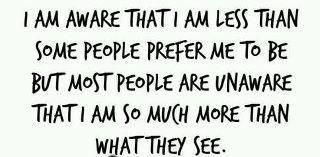One of the most common questions I get asked is "how is Wyatt developing?" When I don't have an easy, static, predictable answer (such as "he's working at a ____ month level", for example), I get a lot of confused looks. With that in mind, this Teaching Tuesday is dedicated to development in the child with Down Syndrome, from birth to 5 years of age.
Each child with Down Syndrome is different. Although all with Trisomy 21 share a third copy of the 21st gene (for example), how that gene expresses itself varies from child to child and is unique to him or her. This also applies for both Translocated and Mosaic Down Syndrome. As the physical aspects vary, so do the developmental delays that each child faces.
It is also important to understand how children develop. Most children acquire and hone new skills and achieve 'milestones' that are not a result of direct teaching (with a few exceptions, such as counting, reading and toilet training). Instead, children learn in the family setting, by being encouraged and modeling behaviour in a social environment. Parents shape appropriate behaviour, language and actions by being sensitive and responsive to needs and rewarding where this has been achieved. A wide range of learning and social opportunities are explored in the context of the family, as well as through books, toys, outings and social interactions. (Buckley, Sacks, 2001) By comparison, children with learning disabilities may have to be actively taught certain skills due to their individual deficits.
Children with Down Syndrome do have a set of general strengths and weaknesses; these will impact on the child's ability to learn and grow. The following developmental profile for Down Syndrome is courtesy of "An Overview of development of infants with Down Syndrome (0-5 years)" (Buckley, Sacks, 2001)
Social Understanding and Interactive Skills
Not surprisingly, there are different developmental guidelines that have been established for children with Down Syndrome. Among those are Milestones for Children with Down Syndrome (Buckley, Sacks, 2001) and a series of growth charts that are Down Syndrome specific (Courtesy of the American Academy of Pediatrics). Utilization of both are important as it allows for a child with Down Syndrome to be assessed more fairly; not in comparison to his or her typical peers, but to peers with Down Syndrome and most importantly, to the child themselves.

Each child with Down Syndrome is different. Although all with Trisomy 21 share a third copy of the 21st gene (for example), how that gene expresses itself varies from child to child and is unique to him or her. This also applies for both Translocated and Mosaic Down Syndrome. As the physical aspects vary, so do the developmental delays that each child faces.
It is also important to understand how children develop. Most children acquire and hone new skills and achieve 'milestones' that are not a result of direct teaching (with a few exceptions, such as counting, reading and toilet training). Instead, children learn in the family setting, by being encouraged and modeling behaviour in a social environment. Parents shape appropriate behaviour, language and actions by being sensitive and responsive to needs and rewarding where this has been achieved. A wide range of learning and social opportunities are explored in the context of the family, as well as through books, toys, outings and social interactions. (Buckley, Sacks, 2001) By comparison, children with learning disabilities may have to be actively taught certain skills due to their individual deficits.
Children with Down Syndrome do have a set of general strengths and weaknesses; these will impact on the child's ability to learn and grow. The following developmental profile for Down Syndrome is courtesy of "An Overview of development of infants with Down Syndrome (0-5 years)" (Buckley, Sacks, 2001)
Social Understanding and Interactive Skills
- Relatively strong and less delayed (compared to speech and language)
- Can make eye contact, smile, coo and babble from early months
- Socially sensitive and understand non-verbal cues (facial expression, tone of voice, body postures) in first year
- Most (such as reaching, sitting and walking) delayed
- Main milestones are steadily achieved
- Most children become mobile and independent in self-help skills (ie: feeding, dressing)
- More delayed than non-verbal understanding and reasoning
- Most understand more language than they are able to express (due to speech production difficulties)
- Signing helps majority of children to communicate (and reduces frustration)
- Hearing problems are common and contribute to difficulties in this area
- Speech is most serious delay as it impacts all areas of mental and cognitive development
- Impairments with verbal short-term memory
- Impacts on child's ability to process information
- Relative strengths
- Auditory processing and memory more impaired
- Visual learners; use visual aids for all teaching
- Often a strength (as early as age 2)
- Builds on visual memory skills
- Reading activities can be used to teach spoken language
- More difficult
- Delayed when compared to reading
- A strength
- Less likely to develop difficult behaviours than other children with cognitive delays
- More likely to develop difficult behaviours than typical children of their age
Not surprisingly, there are different developmental guidelines that have been established for children with Down Syndrome. Among those are Milestones for Children with Down Syndrome (Buckley, Sacks, 2001) and a series of growth charts that are Down Syndrome specific (Courtesy of the American Academy of Pediatrics). Utilization of both are important as it allows for a child with Down Syndrome to be assessed more fairly; not in comparison to his or her typical peers, but to peers with Down Syndrome and most importantly, to the child themselves.


No comments :
Post a Comment
Thank you for your comment.
Although discussion is encouraged, disrespectful or hurtful dialogue will be removed.
Spam will be fried up with a side of tomatoes.